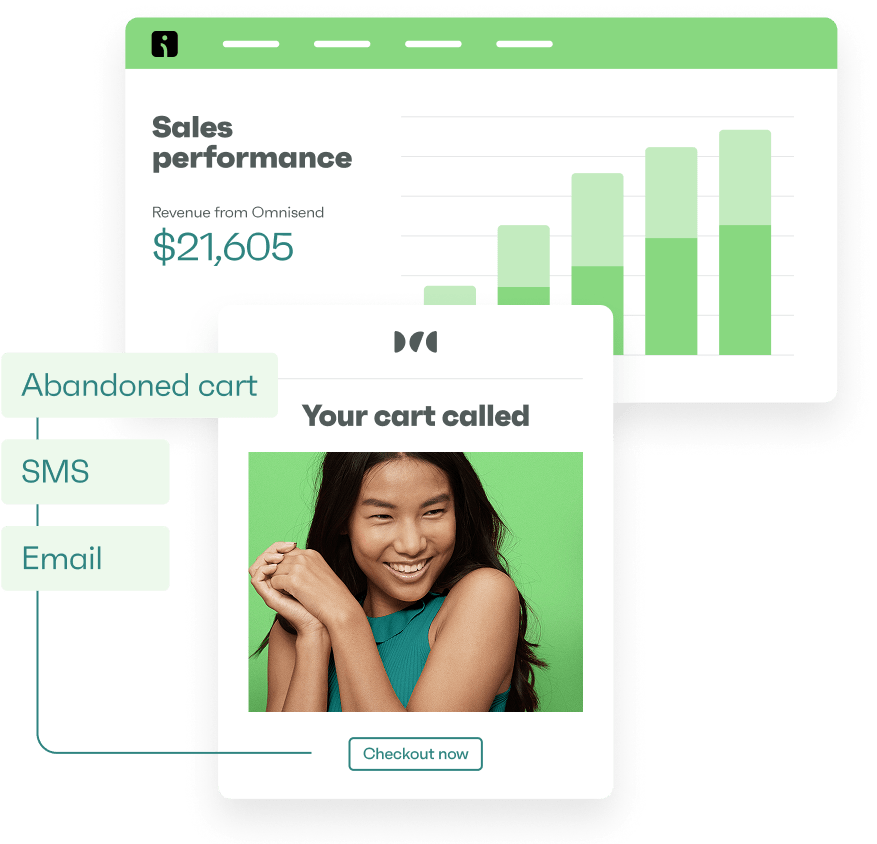Drive sales on autopilot with ecommerce-focused features
See FeaturesBlack Friday dropshipping 2025 isn’t about chasing one “winning product.” A successful strategy involves taking a broader perspective and considering all the costs and benefits beyond the product.
This means focusing on margin safety and using smart automation. It also means adapting to new ecommerce realities, like import duties, carrier surcharges, and TikTok Shop trends.
Over the years, I’ve observed that Black Friday offers larger deals, discounts, and sales opportunities. But hype alone won’t drive sales anymore. You need a clear plan that combines strong product choices, reliable systems, and a strategy that lasts beyond one weekend.
To help you achieve this, I’ll discuss the products worth selling and the ones to avoid in this post. You’ll also get a month-by-month BFCM roadmap, the Shopify Plus apps that matter, and an Omnisend email and SMS playbook to help you scale.
Quick sign up | No credit card required
What is Black Friday dropshipping?
Black Friday dropshipping is a retail model where products are sold online without holding inventory.
When a customer places an order, your supplier handles fulfillment, shipping, and storage. Your focus is marketing, customer experience, and optimizing your store for conversions.
Black Friday dropshipping is effective because it enables you to meet surging demand without overstocking. But it only pays off if your store runs smoothly under heavy traffic.
This model is especially powerful during Black Friday and Cyber Monday (BFCM) because demand compresses into a single week. Shoppers are actively hunting deals, and competition for attention spikes. If your store isn’t optimized, even a small delay can cost you sales.
Here’s what 2024 proved about BFCM shopping patterns:
- Cyber Week sales: $41.1 billion in online spending
- Cyber Monday: $13.3 billion
- Shopify merchants: $11.5 billion across the period
- Mobile share: Over half of all transactions came from smartphones
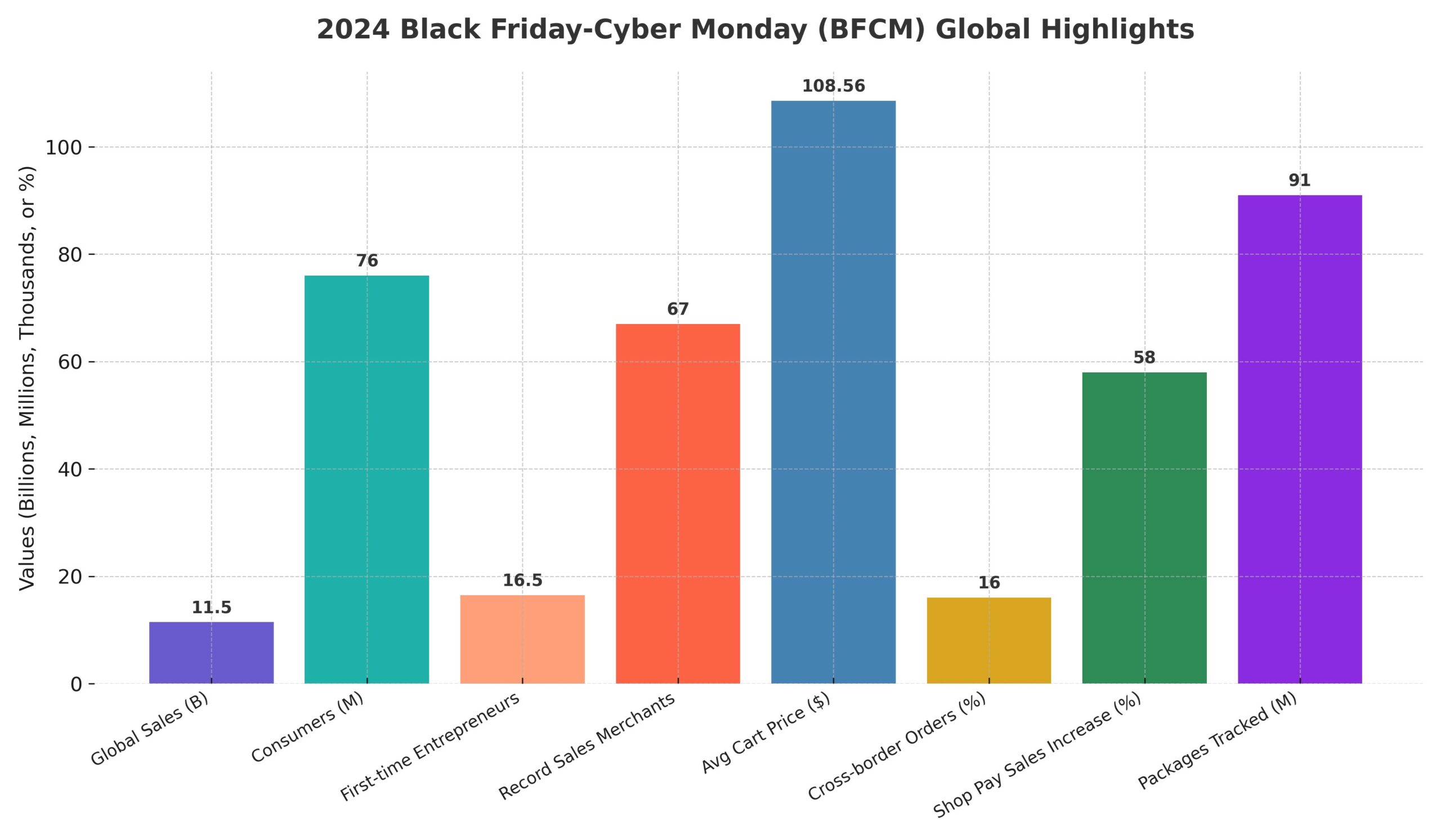
For dropshippers, this means mobile experience matters more than ever. Pages must load fast, navigation should be simple, and checkout must be frictionless. A clunky mobile experience can turn high traffic into low conversions.
In short, Black Friday dropshipping is about agility, preparation, and precision. It lets you capture peak-season demand while controlling costs, but only if your store is ready for the rush.
Is it worth it in 2025?
The value of Black Friday dropshipping in 2025 depends on new rules and market shifts. The end of the de minimis rule on August 29, 2025 (May 2 for China and Hong Kong) changed the game. Before, most parcels under $800 entered the U.S. duty-free. Now, nearly every shipment faces duties, extra paperwork, and slower clearance.
That means your landed cost is higher and timelines are tighter. But it doesn’t kill the model. It rewards sellers who plan their margins carefully and select suppliers strategically.
Who still wins?
Dropshippers with:
- Domestic or nearshore suppliers that ship faster and avoid high import fees
- Lightweight, flat items that cost less to ship and clear customs easily
- Higher average order value (AOV) products, where duties and shipping are a smaller share of revenue
With rising costs, now is the time to re-evaluate your Black Friday dropshipping margins
Margins now matter more than ever. You need to stack costs clearly:
- CAC (cost to acquire a customer)
- COGS (product cost from supplier)
- Duties and surcharges
- Shipping fees (check current carrier surcharges)
- Returns buffer
Here’s a simple example for a $50 product:
| Item | Cost |
|---|---|
| Product (COGS) | $18 |
| Duties + import fees | $6 |
| Shipping + surcharges | $7 |
| CAC (ads + promos) | $12 |
| Returns cushion | $2 |
| Total cost | $45 |
| Profit left | $5 |
That $5 profit on a $50 sale is just a 10% margin. At that level, even a small increase in returns or delivery costs can wipe out what’s left.
When not to start
Black Friday dropshipping isn’t for everyone. Here are the signs you should wait before jumping in:
- You don’t have at least a small budget cushion
- Your supplier hasn’t been validated with test orders
- You’re making unrealistic shipping promises you can’t back up
Margin checklist
Black Friday dropshipping in 2025 is worthwhile if you manage your margins effectively and partner with reputable suppliers. Before you commit, make sure you can:
- Cover duties and carrier surcharges
- Offer realistic shipping timelines
- Absorb a 10–15% return rate
- Maintain at least 20% gross margin
- Scale ad spend without betting all on one campaign
Best products to sell for Black Friday and Cyber Monday 2025
Black Friday dropshipping in 2025 is about building a store that can handle demand and deliver on time — not just going all in on one trendy product. A smart Black Friday dropshipping strategy focuses on products that make money, are easy to ship, and rarely get returned.
Here is a simple framework for picking products.
Product selection framework
Before adding anything, check these points:
- Giftable and easy to buy: Small items under $50 sell fast, while sets priced between $80–$150 help increase the average order
- Light and compact: Products weighing under two pounds ship cheaper and faster
- Low chance of returns: Avoid fragile or tricky items, as returns can quickly eat into your profit
- Safe to sell: Don’t sell anything that needs FDA approval or special certification
- Easy to bundle: Pick items that can be sold together to make bigger orders
This framework keeps your store profitable and smooth during the busy weekend.
Curated product categories
Here’s a detailed look at categories that meet this framework:
Tech accessories
Tech accessories include phone chargers, cases, screen protectors, and wireless earbud cases, all of which are popular add-on purchases.
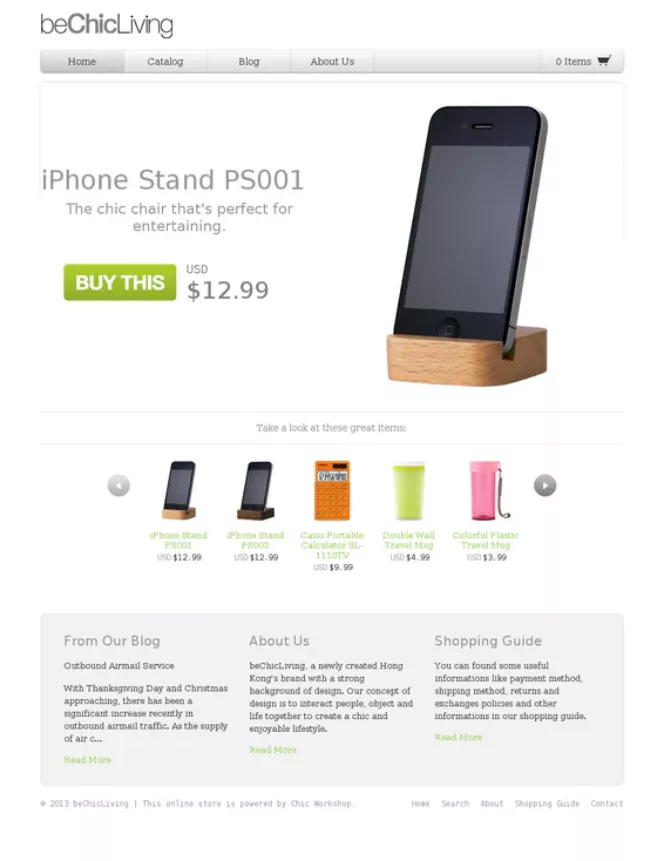
- Margin: The margins are strong because sourcing is cheap, and shoppers are willing to pay a premium for convenience
- Weight: These items are very light, with phone cases and chargers fitting easily into small envelopes
- Return risk: The return risk is low since accessories rarely break or get returned when described clearly
- Compliance: Compliance is straightforward because no special regulations apply to these products
- Tip: A smart way to increase order value is to pair a case with a charger and sell them as a bundle
Home and kitchen add-ons
Home and kitchen add-ons such as organizers, mini tools, hooks, and silicone utensils are popular because they’re affordable, practical, and easy to gift.
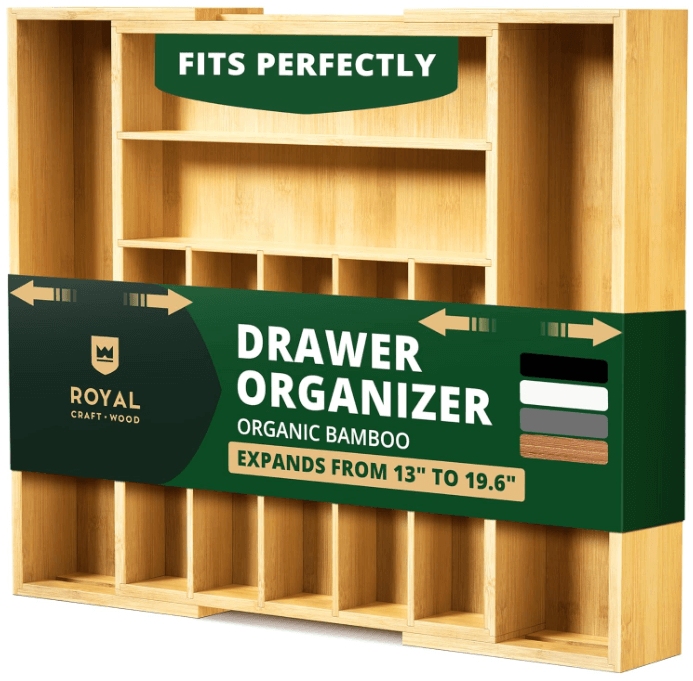
- Margin: The margin is medium because these items are low-cost but sell well in multiples
- Weight: The weight is light since most organizers, hooks, or tools ship flat
- Return risk: The return risk is low because simple items usually have fewer quality complaints
- Compliance: Compliance isn’t an issue as long as you avoid anything electrical
- Tip: A useful tip is to use “Buy two, save 10%” to encourage multipack gift sales
Beauty tools
Beauty tools, such as hair wavers, LED masks, facial rollers, and manicure kits, are popular Black Friday dropshipping buys. Shoppers want self-care products that feel both practical and a little indulgent.
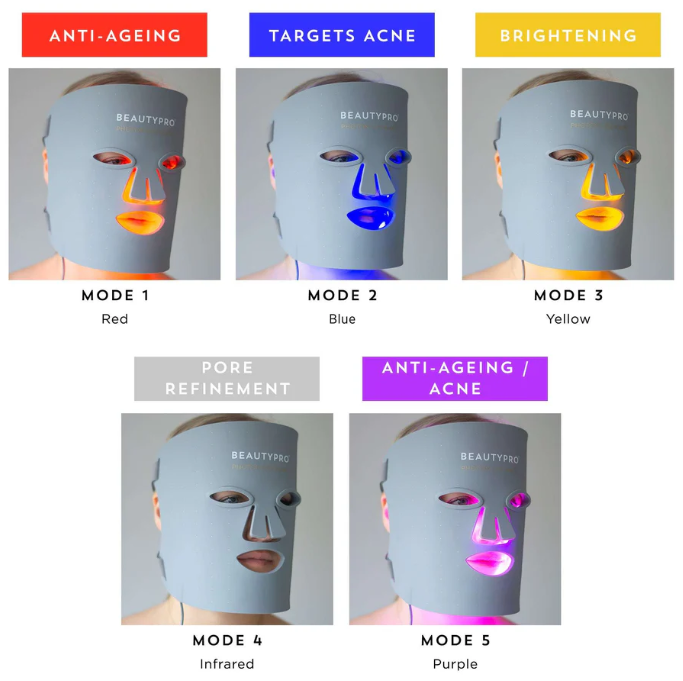
- Margin: The margin is high because buyers see beauty gadgets as valuable gifts
- Weight: The weight is light to medium since rollers and wavers are small, though LED tools need careful packing
- Return risk: The return risk is medium, as these items can be fragile if not packed well
- Compliance: Compliance requires care because you should avoid medical or FDA claims and stick to beauty use only
- Tip: A valuable tip is to bundle a roller with a hair tool to create an easy gift set
Fitness and wellness
Products like resistance bands, yoga mats, foam rollers, and water bottles sell well during Black Friday dropshipping. People look for affordable ways to stay active and support their wellness goals.
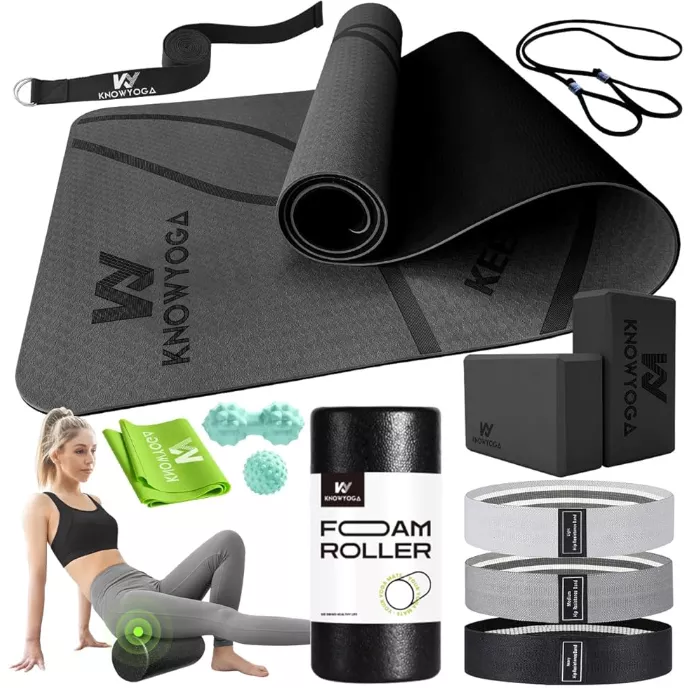
- Margin: The margin is medium because resistance bands and mats are affordable to source, but profit increases when sold in sets
- Weight: The weight is light to medium since bands are cheap to ship, while mats cost more
- Return risk: The return risk is low if you list sizes and features clearly
- Compliance: Compliance is safe as long as you avoid products that claim medical benefits
- Tip: A smart tip is to sell a “starter kit” bundle that includes a mat, bands, and a bottle
Auto accessories
Popular items for auto accessories include seat gap fillers, organizers, phone holders, and sunshades. These products are practical, low-cost upgrades that help shoppers keep their cars tidy and more comfortable.
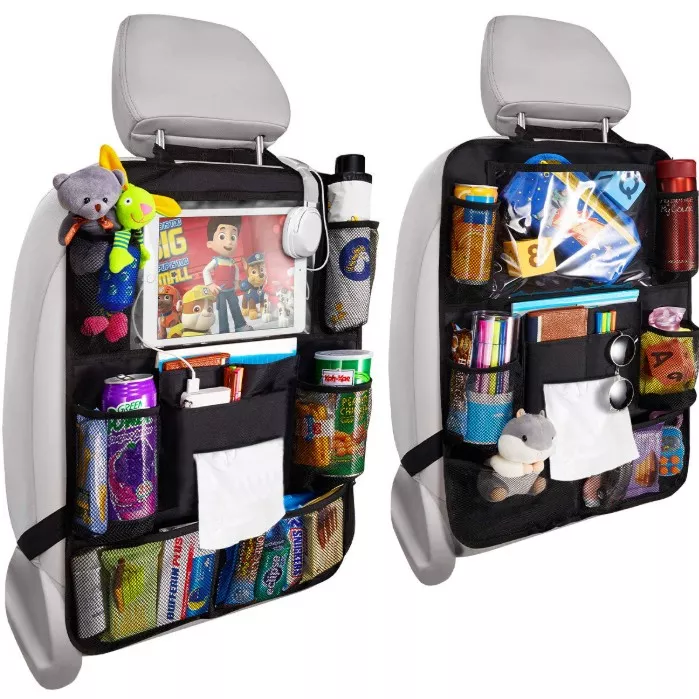
- Margin: The margin is strong because seat gap fillers or phone holders are cheap to source and easy to upsell
- Weight: The weight is light since most items fit in padded mailers
- Return risk: The return risk is very low because durable items rarely break
- Compliance: Compliance has no safety issues, making it easy to sell worldwide
- Tip: A good tip is to bundle two or three small items together as a car care pack
Print-on-demand bundles
Think custom mugs, t-shirts, notebooks, tote bags, or even full gift sets. These products make excellent, affordable, and personalized gifts for the holiday season.
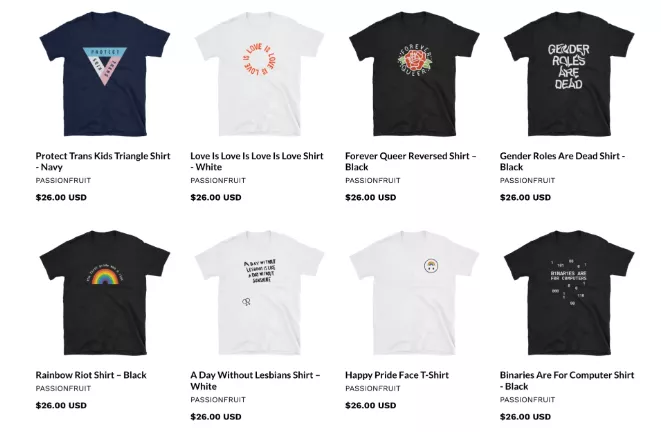
- Margin: Custom designs have a high margin because their perceived value far exceeds their cost
- Weight: The weight is light since t-shirts, mugs, and totes are easy to ship
- Return risk: The return risk is low if sizes and materials are listed clearly
- Compliance: Compliance is safe as long as you avoid printing licensed images you don’t own
- Tip: A smart tip is to offer themed bundles like “Mug + Tee + Tote” for holiday gifts
Bundle and nudge tactics
This is where real profit shows up. A single $12.99 item rarely leaves enough room after ad spend and shipping. But bundles flip the math:
- Offer “Buy two, save 10%” for impulse buyers
- Use BOGO add-ons like “Buy a mat, get bands for half price”
- Combine POD items with other categories to create lightweight, high-value bundles
- Keep bundles easy to ship and low risk
Think of it this way: if your cost of goods (COGS) is $8 and shipping is $5, you’re already at $13 before ads. Selling at $15 leaves no room. But bundle two items at $30, and suddenly you have $17 left to cover ads, returns, and profit.
Following this approach ensures your store has products that sell fast, ship easily, and protect your margins. It involves planning, making smart product choices, and creating simple bundles.
BFCM 2025: How much budget is enough?
The truth is, you don’t need a huge budget to start Black Friday dropshipping. Many new sellers ask, “How much does it cost for dropshipping during peak season?” The key is knowing which costs are fixed and which are variable.
Fixed costs are the basics you can’t skip:
- Shopify plan (your store platform)
- Domain name (your address online)
- A few core apps, like product reviews or cart recovery
Variable costs are where your choices matter:
- Paid ads (your main driver of traffic)
- User-generated content (UGC) for trust and engagement
- Email and SMS campaigns to keep customers coming back
- Product samples (so you know quality before selling)
- A small cushion for returns
Here’s how three starter tiers look in practice:
| Budget | Ads | UGC | Email/SMS | Sampling | Returns reserve |
|---|---|---|---|---|---|
| $100 | 70% | 10% | 10% | 5% | 5% |
| $500 | 60% | 15% | 10% | 10% | 5% |
| $2,000 | 55% | 20% | 15% | 5% | 5% |
Notice how the bigger the budget, the more room you have for creative content and stronger retention channels. That’s because ads get you traffic, but UGC and email/SMS help you keep it.
At $100, most of your spending will go into ads because you need traffic. By $500, you can start testing more content and building an email list. At $2,000, you can balance ads with stronger retention tools like SMS, which helps you profit after BFCM too.
Here’s a quick breakeven formula:
Breakeven ROAS = Selling price ÷ (Product cost + Shipping + Duties + Ad spend per order)
Example: If you sell an item for $100, and total costs (product, shipping, duties, and ads) are $50, you need a 2.0 ROAS to break even. Anything above that is profit.
Keeping a margin cushion matters too. Plan to allocate 10–15% of revenue to cover unexpected costs, such as higher shipping or refunds. That way, you don’t burn out your budget before Cyber Monday.
What makes a winning BFCM 2025 plan?
A winning Black Friday dropshipping plan isn’t built in a week. It starts months in advance, with a clear Black Friday checklist, and you can build momentum and avoid last-minute panic.
September: Tease and prepare
This is the foundation stage for Black Friday dropshipping. The goal isn’t to sell yet but to get noticed. By September, you’re planting seeds so your brand stays top of mind when the rush hits.
Owner’s to-dos
- Line up suppliers and test samples to avoid last-minute surprises.
- Audit your store’s loading speed, especially on mobile
- Update product descriptions and images (PDPs) so they’re clear, mobile-friendly, and show trust signals like reviews
- Start teaser campaigns on email and SMS, promising VIP access to early Black Friday deals
October: Warm up your audience
October is about traffic and trust during Black Friday dropshipping. You want leads before November, focus on growing your list and making your site conversion-ready.
Owner’s to-dos
- Launch paid ads that focus on email capture, not sales
- Add popups with incentives like “early access” or “exclusive discount”
- Use tiered discounts to protect margin while rewarding bigger spends
- Optimize product detail pages with clear photos, short bullets, and trust badges
- Test your checkout flow, remove extra steps that slow buyers down
- Audit PDPs again, make sure bestsellers have clear sizing, shipping info, and FAQs to cut returns
Mid-November: VIP early access
By now, customers expect to hear from you. Reward loyalty and build urgency before the wider crowd arrives.
Owner’s to-dos
- Send exclusive discount codes to subscribers who signed up early
- Test offers like “Buy two, save 10%” or free shipping thresholds
- Include a gift with the purchase to add perceived value without deep discounting
- Double-check stock levels and confirm supplier timelines
- Test your full checkout process (desktop, mobile, guest login) to fix any friction
November 28: Black Friday launch
This is game day. Traffic will be at its highest, and every second counts.
Owner’s to-dos
- Run tiered offers (e.g., 20% off $50, 30% off $100) to raise cart sizes
- Promote bundles or gift-with-purchase items to protect margins
- Plan limited drops to create scarcity and keep engagement high
- Test TikTok Shop flash deals alongside your Shopify store offers
- Monitor checkout and ensure payment methods work smoothly
December 1: Cyber Monday push
Cyber Monday is up next and it’s time to pivot your message and crank up the urgency.
Owner’s to-dos
- Update creatives with “final chance” language to trigger urgency
- Launch limited drops or digital bundles (great for TikTok impulse buying)
- Add bundles and BOGOs, especially for the TikTok Shop, to encourage quick purchases
- Push retargeting ads to cart abandoners and site visitors from Black Friday
Extended week and shipping cut-offs
After Cyber Monday, momentum doesn’t need to stop. Customers still want deals, but urgency changes.
Owner’s to-dos
- Run “last day to ship” countdown campaigns tied to real carrier deadlines
- Offer digital gift cards or downloadable products once shipping cut-offs pass
A strong Black Friday ecommerce strategy is about pricing, timing, and engagement at each stage. It explains how timing and channel mix decide whether sales peak or fizzle.
Which Shopify apps are most helpful for BFCM 2025?
Black Friday Shopify dropshipping and Cyber Monday strain every ecommerce system. The right Shopify apps help your store run smoothly and bring in more sales without adding extra costs.
Having BFCM Shopify apps shows how stores prepare for heavy demand. Instead of stacking dozens of tools, focus on six categories that cover the essentials.
- Email and SMS marketing (Omnisend): Build direct connections with your customers, cut ad spend, and automate campaigns
- Bundling and upsell apps: Increase average order value with smart offers and product pairings
- Countdown and urgency apps: Push faster decisions with clear timers and limited-stock signals
- Reviews and UGC apps: Build instant trust with social proof on product pages
- Search and merchandising apps: Guide traffic to high-margin or trending products
- Shipping and tracking apps: Reduce support tickets with clear, branded delivery updates
1. Email and SMS marketing (Omnisend)
Email and SMS remain the most reliable profit drivers during black Friday dropshipping. Omnisend takes the stress out of segmenting buyers, triggering abandoned cart flows, and scheduling campaigns around your offer drops.
Omnisend is also built for Shopify, so it integrates cleanly and won’t crash under heavy traffic. That’s why Omnisend is one of the best Shopify apps most BFCM stores install.
2. Bundling and upsell apps
Discounts alone cut margins. Bundling and upsell tools raise order value by offering “Buy two, save 10%” or suggesting add-ons at checkout.
This matters for Black Friday dropshipping because ads are expensive, and profitable orders depend on squeezing more value from each cart. Some of the most effective dropshipping apps for Shopify already include these features.
3. Countdown and urgency apps
A countdown timer or low-stock warning pushes Black Friday dropshipping shoppers to act now, not later.
The best apps place timers on product pages and in the cart, synced with your campaign end dates. Avoid apps that feel gimmicky or slow down the site.
4. Reviews and UGC apps
Many Black Friday dropshipping shoppers are buying from you for the first time, so they need extra reassurance before completing a purchase. Reviews and user-generated content (UGC) close the trust gap. Apps that collect star ratings, text reviews, or photos make your product pages look credible.
It’s a bonus if the app lets you repurpose UGC in ads or emails, saving you content costs at the busiest time of year.
5. Search and merchandising apps
A surge of traffic means nothing if buyers can’t find what they want. Search apps help shoppers find products faster through features like smart autocomplete, filters, and product pinning. They also let you pin bestsellers or high-margin bundles to the top.
That way, your store leads shoppers toward profitable items instead of random listings. This is especially useful during Shopify Black Friday dropshipping sales, when customers expect speed and clarity while browsing.
6. Shipping and tracking apps
One of the biggest causes of support tickets is shipping delays. Tracking apps let customers see where their order is without emailing you.
The best ones also make tracking pages, where you can show extra offers or January discounts while customers track their deliveries. This protects trust and keeps support costs down.
BFCM 2025 email and SMS marketing plan for ecommerce brands
If there’s one area brands cannot afford to wing during BFCM 2025, it’s the email and SMS plan. Customers expect fast communication, tailored offers, and timely updates. If you miss the right moment, you lose the sale.
Omnisend helps brands build a powerful structure without being clunky, giving ecommerce teams confidence that their messages will land where and when they matter most.
Automations
Smart brands don’t wait until Black Friday to prepare. By mid-October, the following flows should be live and tested:
Automation checklist
- Welcome series: Introduce the brand, highlight value, and offer an incentive to convert first-time signups
- Browse abandonment: Trigger reminders when a shopper views products without adding to the cart
- Cart abandonment: Send a friendly nudge to recover sales that would otherwise be lost
- Post-purchase series: Thank customers, suggest cross-sells, and ask for reviews
- Win-back sequence: Re-engage customers who haven’t purchased in months
- Price-drop and back-in-stock alerts: Encourage urgency by letting subscribers know when hot products return or discounts apply
When brands refine their approach using BCFM email analysis, they often uncover gaps in timing and frequency. Closing these gaps can be the difference between an ignored campaign and one that drives ROI.
Campaign plan
Once flows are running, the focus shifts to live campaigns. A clear sequence avoids over-messaging and ensures every segment receives relevant communication.
Campaign structure
- VIP early access (mid-Nov): Reward loyal buyers with first dibs
- Doorbuster (Nov 28 AM): Kick off Black Friday with the best deals
- Black Friday PM send: Highlight remaining stock, limited bundles, or tiered discounts
- Cyber Monday AM (Dec 1): Lead with urgency and fresh promotions
- Cyber Monday PM: Push “last chance” messaging
- Extended week offers: Keep momentum alive for late buyers
- Last-ship promos: Emphasize shipping deadlines for Christmas delivery
- E-gift pivot: Once shipping cut-offs pass, focus on gift cards and digital options
Sample subject lines you can use
- “VIPs shop first: your private Black Friday sale starts now”
- “This morning’s deal won’t last. See what’s inside”
- “Cart still waiting? We saved your Black Friday picks”
- “Cyber Monday: one more chance at the year’s best deals”
- “Last day for guaranteed holiday delivery”
Segmentation
Blasting everyone with the same message is a surefire way to land in spam. Segmentation ensures your Black Friday marketing stays relevant:
- VIPs/high LTV: Exclusive early access and highest discounts
- Recent openers: Regular campaigns but with capped frequency
- High-intent shoppers (viewed ≥2 PDPs): Product-specific reminders with urgency
- SMS-opted subscribers: Time-sensitive alerts like “last chance” or shipping cut-offs
Deliverability
Even the sharpest campaigns flop if they never reach the inbox. Ahead of Cyber Week:
- Warm your domain and send IP gradually
- Clean lists, remove bounces, and inactive contacts
- Cap frequency (e.g., no more than two emails/day per subscriber)
- Stagger SMS and email to avoid overlap fatigue
This refined Black Friday email marketing approach ensures campaigns land in the inbox, not the junk folder.
The bottom line is, BFCM has no time for guesswork. By October 15, all key automations should already be live. With a clear campaign cadence, tight segmentation, and deliverability safeguards, ecommerce brands can approach peak season with confidence.
Omnisend customers already achieve one of the highest ROIs in the industry: $68 for every $1 spent. This proves that a structured BCFM email strategy actually drives revenue and isn’t just best practice.
How to retain Black Friday and Cyber Monday customers
Many brands treat Black Friday and Cyber Monday (BFCM) as the finish line. In truth, these events are just the beginning.
The rush of sales only lasts a short time. However, acquired customers become valuable when you focus on relationships, not just transactions. The goal is to shift from chasing short-term profits to nurturing a sustainable and loyal customer base.
Data analysis
The most valuable asset from Black Friday dropshipping is the customer data you collect. Every order reveals insights about your products, channels, and discount effectiveness.
Analyze which products sold the most and which discounts drove actual purchases. Look at each channel, including email, SMS, social, and paid ads, to see which one returned the highest revenue. Also, track metrics like order frequency, average order value, and first-time vs. returning buyers.
This information dictates your strategy for next year, letting you optimize campaigns, improve offers, and identify your most profitable segments.
For example:
- If mobile conversions rose above 60%, consider prioritizing mobile-friendly checkout and SMS campaigns
- If low-cost, giftable items outperformed larger AOV bundles, adjust inventory and messaging for future launches
Customer nurturing
A single thank-you email isn’t enough. A structured post-purchase sequence helps build trust and cultivate a stronger, more lasting relationship. Start with a confirmation email that includes delivery details and sets expectations.
Follow up with a brand story or value email to show who you are beyond the transaction. Add value by providing product usage tips, tutorials, or care instructions to improve the user experience. Finally, request reviews or user-generated content to reinforce engagement and provide social proof for future buyers.
Consistency matters: sending relevant, well-timed communications ensures customers remember your brand positively. Segment by purchase type or engagement to avoid irrelevant messages, which can hurt long-term loyalty.
Driving repeat sales
Black Friday dropshipping purchases are often discounted, but that first sale is a doorway to a longer, profitable lifecycle. Segment buyers based on what they purchased, and send personalized cross-sell or upsell offers in the following months. For instance:
- Customers who bought fitness gear could be offered accessories like mats or resistance bands
- Buyers of home gadgets might receive suggestions for complementary items or limited-edition bundles
Tailored recommendations increase the chance of full-price purchases while strengthening the relationship. Consider including VIP early-access invitations for high-value customers or offering exclusive, limited-time deals to incentivize repeat purchases.
BFCM should be treated as a customer acquisition engine beyond just a sales event. Focusing on customer retention means using the data collected, nurturing new buyers thoughtfully, and creating repeat sales opportunities.
When done right, these customers become long-term advocates who continue to generate revenue well beyond the holiday rush.
Wrapping it up: Final tips for BFCM 2025
You’re ready for Black Friday dropshipping. With proper preparation, this season can be more than a sales spike and set the stage for long-term growth.
Success starts with selecting products that balance margin safety, shipping weight, low returns, and compliance. Pair this with marketing that reaches the right customers at the right time.
Your Shopify apps, email campaigns, and SMS workflows should all work together. When aligned, they make Black Friday and Cyber Monday predictable and profitable rather than chaotic.
Think of Black Friday dropshipping not just as a weekend of discounts, but as a customer acquisition engine. Use it to acquire loyal buyers, test offers, refine processes, and gather data to improve future campaigns.
This is your opportunity to scale smart, optimize efficiency, and turn seasonal demand into lasting business growth.
Quick sign up | No credit card required
Black Friday dropshipping FAQs
Tech gadgets, home essentials, and fashion accessories dominate Black Friday dropshipping. Popular items include headphones, smart devices, kitchen tools, and clothing. These products sell fast due to their broad appeal, impulse-buy potential, and giftable nature, making them reliable choices for dropshipping stores aiming to maximize conversions.
Mobile tech accessories, budget-friendly home organizers, and personal care tools are expected to lead the Black Friday 2025 dropshipping surge. Low-weight, low-return-risk items with high perceived value perform best. Bundles and seasonal gift sets also generate strong sales. Timing campaigns and using clear promotions can significantly increase conversions.
Yes, but savings vary. Many discounts are genuine, especially on electronics and seasonal goods. However, some deals are limited-time, bundled, or promotional pricing. During Black Friday dropshipping, smart shoppers compare prices, check historical trends, and focus on items with predictable margin safety to avoid paying full price elsewhere later.
Starter budgets can range widely. Small stores may operate with $100–$500 for testing, while serious campaigns need $1,500–$2,000 to cover ads, samples, email/SMS, and returns reserves. Allocate funds for variable costs like creatives and ad campaigns, and ensure you have a buffer to manage returns or carrier surcharges.
Plan for delays by using domestic or nearshore suppliers, offering realistic shipping estimates, and communicating clearly with buyers. Automate updates via email and SMS, and have a contingency plan for high-demand items. Proactively addressing delays protects customer trust and preserves long-term relationships beyond the BFCM weekend.
TABLE OF CONTENTS
TABLE OF CONTENTS


No fluff, no spam, no corporate filler. Just a friendly letter, twice a month.

 OFFER
OFFER







